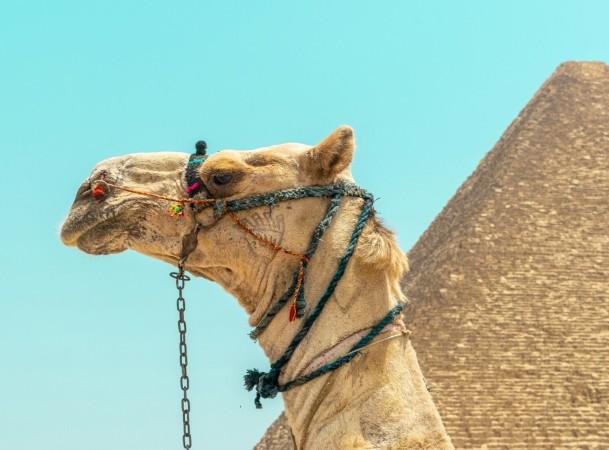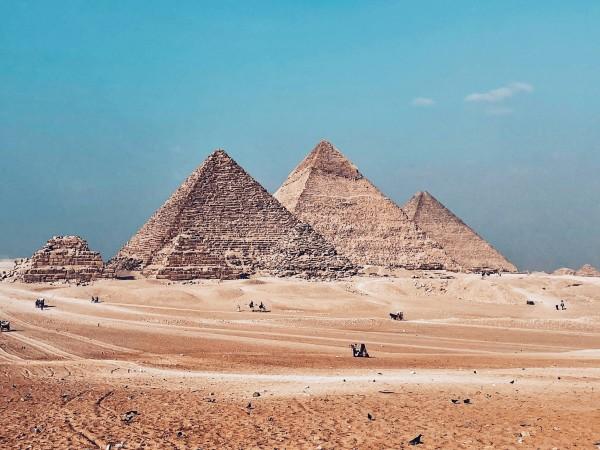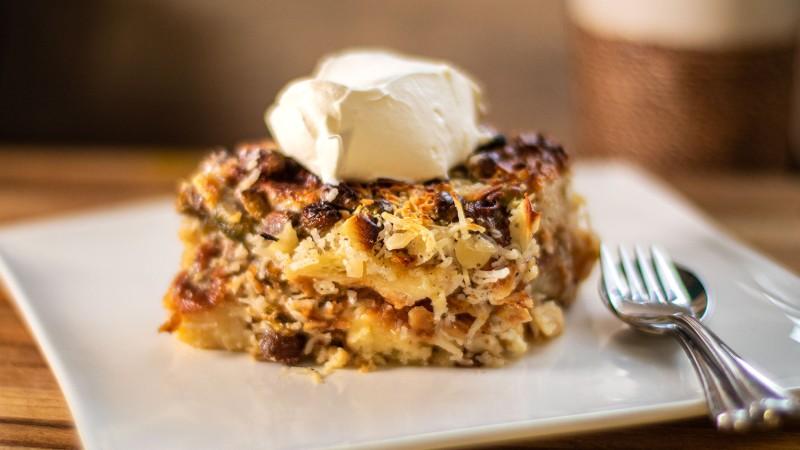Explore Giza - Egypt Travel, Africa
Giza, one of Egypt's most iconic destinations, offers travelers a unique blend of ancient history and modern charm. Known worldwide for its breathtaking Pyramids and the Sphinx, this city holds a significant place in human history. But Giza is more than just its ancient monuments—it’s a gateway to exploring the rich culture, traditions, and everyday life of Egypt. Whether you’re a history buff, a foodie, or simply looking for an adventure, Giza has something for every traveler.
Population: Approximately 9.2 million in 2021.
Economy: Giza’s economy is driven by tourism, with significant contributions from the hospitality and service sectors. Agriculture and small-scale industries also play a role, supporting the city’s diverse economic base.
Landmarks: Famous for the Great Pyramid of Khufu, The Great Sphinx, and the Grand Egyptian Museum.
Egypt

Overview of Giza
History & Cultural Influence
When you think of Giza, the first images that come to mind are probably the towering Pyramids of Giza and the mysterious Great Sphinx. These ancient marvels symbolize Egypt's powerful cultural influence, dating back over 4,500 years. As the heart of ancient Egypt, Giza also served as a royal burial ground for pharaohs and a center of religious and cultural activity. The Pyramids of Giza, including the Great Pyramid of Khufu, are the last surviving wonders of the ancient world. These structures tell the story of Egypt’s mastery of engineering and art, reflecting its civilization’s power and spiritual depth.
Interaction with The Locals
Giza's population is a mix of diverse communities, with a strong presence of Egyptian locals deeply rooted in the city’s ancient heritage. Giza’s citizens are known for their hospitality, blending traditional Egyptian customs with a modern lifestyle. Many work in tourism, trade, and agriculture, contributing to the vibrant atmosphere of this historic destination. While Arabic is the primary language, English is commonly spoken in tourist areas, making communication easier for visitors.

Giza city, Egypt - © Faris El-Gwely
Top Attractions in Giza
Giza is home to some of the most iconic landmarks in the world, and no visit would be complete without exploring these awe-inspiring attractions. Each site offers a glimpse into the grandeur of ancient Egypt and its cultural heritage.
The Great Pyramid of Khufu
The Great Pyramid of Khufu, also known as the Pyramid of Cheops, is the largest of the three pyramids on the Giza Plateau and the last remaining Wonder of the Ancient World. Built as a tomb for Pharaoh Khufu, this colossal structure stands over 140 meters tall and is a marvel of engineering. Exploring its corridors and chambers allows visitors to step back in time and marvel at the craftsmanship of ancient Egypt.
The Great Sphinx
The Great Sphinx, situated near the pyramids, is one of the most famous symbols of Egypt. With its lion's body and human head, the Sphinx is thought to represent Pharaoh Khafre. It stands as a silent guardian of the Giza Plateau, facing the rising sun, adding to its mystical aura. Don’t forget to take a closer look at its detailed carvings and iconic presence.
The Solar Boat Museum
Next to the Great Pyramid, you’ll find the Solar Boat Museum, which houses a full-size ancient boat believed to have been used by Pharaoh Khufu. This remarkably well-preserved vessel is thought to have been buried with the pharaoh to transport him to the afterlife. The museum provides fascinating insight into ancient Egyptian burial customs and shipbuilding techniques.
Grand Egyptian Museum
Just outside of Giza, the Grand Egyptian Museum is set to be the largest archaeological museum in the world. Scheduled to house over 100,000 artifacts, including treasures from King Tutankhamun’s tomb, this museum will offer a comprehensive journey through Egypt’s history. It’s a must-visit for anyone looking to explore Egypt beyond the pyramids and delve deeper into its archaeological wonders.

The Pyramids of Giza - © Abdelrhman Allam
Must-Try Dishes in Giza
Giza’s culinary tradition is a rich tapestry of flavors, reflecting Egypt’s diverse culinary heritage. From hearty street foods to savory main courses and delightful desserts, these local dishes are a must-try for any traveler exploring the city.
- Koshari: A beloved Egyptian comfort food, Koshari is a satisfying blend of rice, pasta, lentils, chickpeas, and fried onions, all topped with a tangy tomato sauce and a dash of garlic vinegar.
- Fattah: Often served during special occasions and feasts, Fattah is a layered dish of toasted bread, rice, and slow-cooked lamb, soaked in a garlic vinegar sauce. The combination of tender meat and flavorful rice makes it a favorite among locals.
- Mahshi: Mahshi refers to vegetables such as bell peppers, zucchini, and grape leaves stuffed with a flavorful mix of rice, herbs, and sometimes ground meat.
- Hawawshi: Hawawshi is Egypt’s answer to stuffed pita bread. Ground spiced meat is stuffed into a flatbread and baked until crispy, making for a deliciously savory snack. You’ll find Hawawshi at local food stalls and bakeries, often paired with pickles or salad.
- Basbousa: This sweet, semolina-based cake is soaked in syrup and often topped with almonds or coconut. Basbousa is a common dessert in Giza and can be found at most pastry shops. Its rich sweetness makes it a perfect way to end a meal.
- Om Ali: A famous Egyptian dessert, Om Ali is a creamy bread pudding made from layers of puff pastry, milk, sugar, and nuts. Served warm and often topped with raisins or coconut, it’s a comforting dish that’s hard to resist.

Om Ali - © JOEL MIELLE (RECIPE30)
Festivals & Local Celebrations
Giza is rich in cultural festivals and religious celebrations that give visitors a deeper insight into the local traditions. These events are marked by lively gatherings, music, dancing, and a strong sense of community.
Sham El-Nessim
One of Egypt’s oldest festivals, Sham El-Nessim, is celebrated every year during spring. It’s a national holiday where families gather for picnics and enjoy traditional foods like Feseekh (salted fish). In Giza, locals flock to the parks and the banks of the Nile to celebrate the arrival of spring with outdoor activities and communal meals.
Ramadan & Eid Al-Fitr
During the holy month of Ramadan, Giza, like the rest of Egypt, undergoes a transformation. As Muslims fast from sunrise to sunset, the city comes alive after dusk. Streets are adorned with colorful lanterns, and special Ramadan dishes are served in homes and restaurants. Eid Al-Fitr commemorates the conclusion of Ramadan with feasts, family reunions, and philanthropic activities.
Eid Al-Adha
Eid Al-Adha, commonly known as the "Festival of Sacrifice," is another major Islamic festival in Giza. It commemorates the willingness of Prophet Ibrahim to sacrifice his son in obedience to God. Families gather to pray, share meals, and distribute food to those in need. The celebration is characterized with cattle sacrifices, and families and communities eat traditional meals.
Pharaonic Festival
For those interested in Egypt’s ancient culture, the Pharaonic Festival is a vibrant celebration held in various parts of Giza. This event revives the traditions of ancient Egypt with reenactments, traditional music, and dance performances that celebrate the legacy of the Pharaohs.
What to Do in Giza
- Camel Rides by the Pyramids: A camel ride around the Great Pyramids is the must-try Giza experience. As you walk over the desert sands, you'll get stunning views of the pyramids and the immense Sahara Desert. This activity offers an authentic way to experience the ancient wonders.
- Exploring the Pyramids of Giza: Of course, no trip to Giza is complete without exploring the Pyramid Complex. Visitors can enter the Great Pyramid of Khufu, climb the steep steps of its interior, and marvel at its construction. To complete the experience, visit the adjacent Pyramids of Khafre and Menkaure.
- Nile River Cruises: For a more relaxed experience, embark on a Nile River cruise. These cruises offer panoramic views of the city’s skyline and the desert landscape. Many cruises also include traditional Egyptian entertainment, such as belly dancing and live music.
- Sound and Light Show at the Pyramids: In the evening, the Giza Pyramids are illuminated in a mesmerizing Sound and Light Show. This multimedia experience tells the story of ancient Egypt, narrated by the Sphinx, and brings the pyramids to life with vibrant colors and dramatic music. It’s a must-see for history enthusiasts.
Shopping in Giza
- Khan El Khalili Bazaar: As mentioned earlier, Khan El Khalili Bazaar is one of the most famous markets in Egypt, located in nearby Cairo. This bustling bazaar is known for its winding alleyways filled with stalls selling everything from traditional jewelry to spices, fabrics, and handmade crafts.
- First Mall: For a more upscale shopping experience, First Mall in Giza is the place to go. This luxurious mall is home to high-end international brands, designer boutiques, and elegant cafés. It offers a contrast to the traditional markets, providing a more modern shopping environment.
- Giza’s Souvenirs and Local Crafts: When it comes to souvenirs, Giza is known for its pharaonic-inspired items such as miniature pyramid models, papyrus paintings, and alabaster statues. Many local artisans also sell handmade jewelry, textiles, and pottery, which make for authentic gifts to bring back home.

Camel Rides by the Pyramids - © 2H Media
Weather in Giza: Best Time to Visit
Spring in Giza
- Weather: Spring offers moderate temperatures ranging from 25°C to 30°C (77°F to 86°F), with sunny days and cool evenings. It's a wonderful time to visit Giza before the summer heat arrives.
- Tourism Trend: Spring is a shoulder season, attracting travelers looking for milder weather and fewer crowds. It’s an excellent time to explore the city without the intensity of winter’s peak tourism. Hotels and tour packages may offer more availability and better rates, providing a balance between good weather and a more relaxed atmosphere.
Summer in Giza
- Weather: Summers in Giza are scorching, with temperatures often exceeding 40°C (104°F). The heat is intense, especially during the midday hours, and the sun can be overwhelming.
- Tourism Trend: Due to the extreme heat, summer is the off-peak season for tourism in Giza. However, this can be a great time to visit for budget travelers, as hotels and attractions often offer discounts to attract visitors. Outdoor activities like visiting the pyramids should be planned for early morning or late afternoon to avoid the midday sun.
Autumn in Giza
- Weather: Like spring, autumn brings pleasant temperatures, typically ranging from 25°C to 30°C (77°F to 86°F). The transition from summer to winter makes it an ideal season for comfortable travel.
- Tourism Trend: Autumn is another shoulder season, with moderate crowds and pleasant weather. It’s a great time to visit Giza if you want to enjoy sightseeing without the peak season rush. Tourists can comfortably explore the pyramids, the Sphinx, and other outdoor sites without the extreme heat or large winter crowds.
Winter in Giza
- Weather: Winter is Giza’s mildest season, with daytime temperatures averaging around 20°C (68°F) and cooler nights. It’s the most comfortable time of the year, making it ideal for sightseeing and outdoor activities.
- Tourism Trend: This is the peak tourist season in Giza because the pleasant weather draws large crowds, especially around major attractions like the Pyramids of Giza and the Sphinx. Expect higher prices for accommodations and more crowded sites.

Exploring the Pyramids of Giza - © Michael Starkie
Essential Travel Information
Getting Around Giza
- Taxis and Ride-Sharing: Taxis are a popular and convenient way to travel around Giza. Official taxis are metered, but it’s wise to confirm the fare before starting your journey. Ride-sharing apps like Uber and Careem are also widely used and offer a convenient alternative, with the added benefit of fixed fares and easy payment options.
- Public Buses: Giza has an extensive public bus network that is affordable and covers most major routes. Buses are a good option for budget travelers, but they can be crowded and may not always adhere to strict schedules. Ensure you check the route maps and schedules in advance.
- Metro: The Cairo Metro, accessible from Giza, is a quick and efficient way to travel to central Cairo and other nearby areas. The metro system is modern and affordable, making it a practical choice for navigating the region.
- Private Car Hire: For a more flexible travel experience, consider hiring a private car with a driver. This option allows you to explore Giza and its surroundings at your own pace and is ideal for visitors who prefer comfort and convenience.
ATM & Banking Services
In Giza, accessing your finances is straightforward with numerous ATM and banking services available. ATMs are widely distributed across the city, especially near major tourist spots, shopping areas, and hotels, allowing for easy cash withdrawals using international credit and debit cards. It’s advisable to inform your bank of your travel plans to prevent any issues with transactions. For additional banking needs, several local banks offer services such as currency exchange and financial management.
Where to Stay in Giza
- Luxury Hotels: For those seeking a high-end experience, Giza features several luxury hotels that provide exceptional comfort and stunning views of the Pyramids. These establishments offer upscale amenities, elegant settings, and top-notch service, ideal for a lavish stay.
- Mid-Range Hotels: There are numerous mid-range hotels in Giza that strike a balance between comfort and affordability. These hotels provide a pleasant stay with good amenities and convenient access to major attractions, making them a great choice for travelers looking for value without compromising on quality.
- Homestays: Homestays can range from private rooms in a family home to entire guesthouses run by locals. This option often includes meals and insights into daily life in Giza, offering a unique and authentic perspective compared to traditional hotels.
Articles for you

Explore Yala National Park - Sri Lanka Travel, Asia
Tucked away in Sri Lanka’s southeastern corner, Yala National Park is where wild nature meets deep tradition. Known worldwide for its leopard population, the park is also home to elephants, sloth bears, crocodiles, and hundreds of bird species. Beyond wildlife, Yala opens doors to a cultural landscape dotted with ancient temples, Buddhist ruins, and coastal villages. For travelers seeking more than just a safari, Yala offers a chance to explore eco-tourism, local communities, and sacred heritage sites.
Population: The Yala National Park area doesn’t have a human population.
Economy: The economy around Yala National Park thrives on a blend of eco-tourism, agriculture, and local services. Safari tours, eco-lodges, and cultural experiences drive steady income for nearby towns like Tissamaharama and Kataragama, supporting thousands of families.
Landmarks: Famous for Block I of Yala and wildlife encounters, including elephants, sloth bears, crocodiles, and exotic bird species.

Explore Galle - Sri Lanka Travel, Asia
Nestled on Sri Lanka’s southern coastline, Galle is a vibrant city where history meets the sea. Its cobbled streets, colonial architecture, and serene beaches make it a must-visit destination for travelers seeking a blend of culture, adventure, and relaxation. A UNESCO World Heritage site, Galle captivates visitors with its Dutch Fort, bustling markets, and friendly locals. Whether you’re exploring the ramparts at sunset or savoring fresh seafood by the shore, Galle promises an unforgettable journey into Sri Lanka’s heritage.
Population: Approximately 113,000 in 2023.
Economy: Galle’s economy thrives on tourism, trade, and fisheries. The city’s historic fort, colonial architecture, and coastal charm draw thousands of international visitors each year, making tourism its main economic driver. Fishing remains vital for local livelihoods, supplying fresh seafood across the region.
Landmarks: Famous for the Galle Fort, Dutch Reformed Church & Maritime Museum, and Unawatuna Beach.

Explore Bentota - Sri Lanka Travel, Asia
Nestled along Sri Lanka’s southwestern coast, Bentota is a tropical paradise that blends golden beaches, vibrant culture, and thrilling adventures. Famous for its calm waters, luxury resorts, and scenic river estuary, Bentota has become a top destination for travelers seeking both relaxation and authentic experiences. From serene beach walks at sunrise to adrenaline-pumping water sports, this coastal town offers a perfect balance of leisure and exploration. With its proximity to Colombo and Galle, Bentota is easy to reach, making it an ideal stop for both short escapes and extended holidays.
Population: Approximately 37,000 in 2023.
Economy: Bentota’s economy thrives mainly on tourism, which drives local businesses such as hotels, restaurants, and wellness retreats. The town also benefits from fishing, coconut cultivation, and handicrafts like wood carving and batik textiles. Many residents rely on the growing demand for water sports and Ayurvedic treatments, making tourism the backbone of both income and employment in the area.
Landmarks: Famous for Bentota Beach, Bentota River Safari, and Kande Vihara Temple.

Explore Mirissa - Sri Lanka Travel, Asia
Mirissa is a charming coastal town on Sri Lanka’s southern shoreline. Known for its golden beaches, turquoise waters, and vibrant marine life, it has become a must-visit stop for travelers exploring the island. Many come for whale watching, surfing, and sunset views at Coconut Tree Hill, but Mirissa offers much more than postcard beauty. The fishing boats you see anchored by the bay carry generations of stories. Local traditions, delicious cuisine, and a laid-back rhythm of life shape every visitor’s experience.
Population: Approximately 4,700 in 2023.
Economy: Mirissa’s economy is largely shaped by its coastal location. Fishing has long been the backbone of local livelihoods, with generations relying on the Indian Ocean for income. In recent decades, tourism has become the main driver of growth, thanks to whale watching, surfing, and beachside hospitality.
Landmarks: Famous for Mirissa Beach, Coconut Tree Hill, and Parrot Rock Bridge.

Explore Nuwara Eliya - Sri Lanka Travel, Asia
Tucked away in the Central Highlands of Sri Lanka, Nuwara Eliya is often called “Little England”. With its rolling tea plantations, cool misty mornings, and colonial charm, this mountain town feels like a step into another world. Travelers come here to breathe fresh air, walk through flower gardens, sip the finest Ceylon Tea, and enjoy a pace of life far from the island’s busy cities. Whether you’re drawn by scenic landscapes, heritage architecture, or the warmth of its people, Nuwara Eliya is a destination that blends nature, culture, and history in perfect harmony.
Population: Approximately 781,000 in 2023.
Economy: Nuwara Eliya’s economy thrives mainly on tea production, as it sits in the heart of Sri Lanka’s central highlands, famous worldwide for Ceylon Tea. The city also benefits from a growing tourism industry, attracting visitors with its colonial charm, cool climate, and scenic landscapes.
Landmarks: Famous for Gregory Lake, Hakgala Botanical Garden, and Victoria Park.

Explore Sukau - Malaysia Travel, Asia
Nestled on the banks of the Kinabatangan River in Sabah, Malaysian Borneo, Sukau is a destination where wildlife, culture, and conservation come together. Known as one of Asia’s top spots for river safaris and eco-tourism, this quiet village offers a front-row seat to encounters with Bornean orangutans, pygmy elephants, proboscis monkeys, and exotic birdlife.
Population: Approximately 1,400 in 2019.
Economy: Sukau’s economy is shaped by its riverine location and natural resources. Traditionally, the Orang Sungai community relied on fishing, small-scale farming, and forest gathering for their livelihood. Today, the village has shifted toward eco-tourism, with river cruises, jungle trekking, and homestays providing income.
Landmarks: Famous for the Kinabatangan River cruises, Gomantong Caves, and Ox-bow lakes and wetlands.
